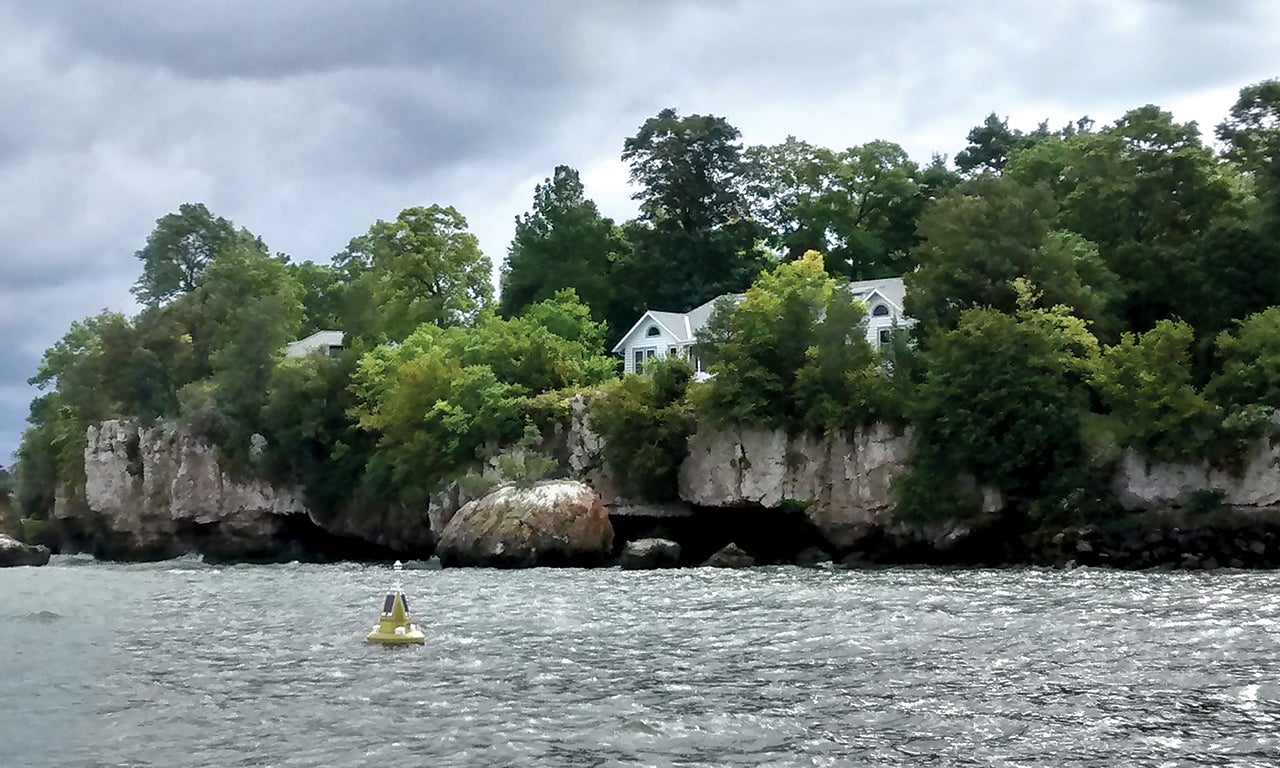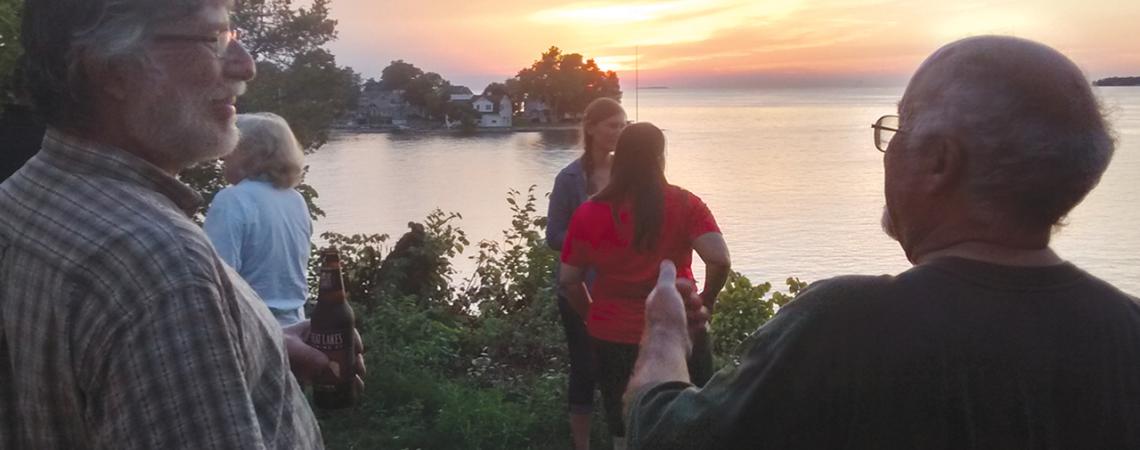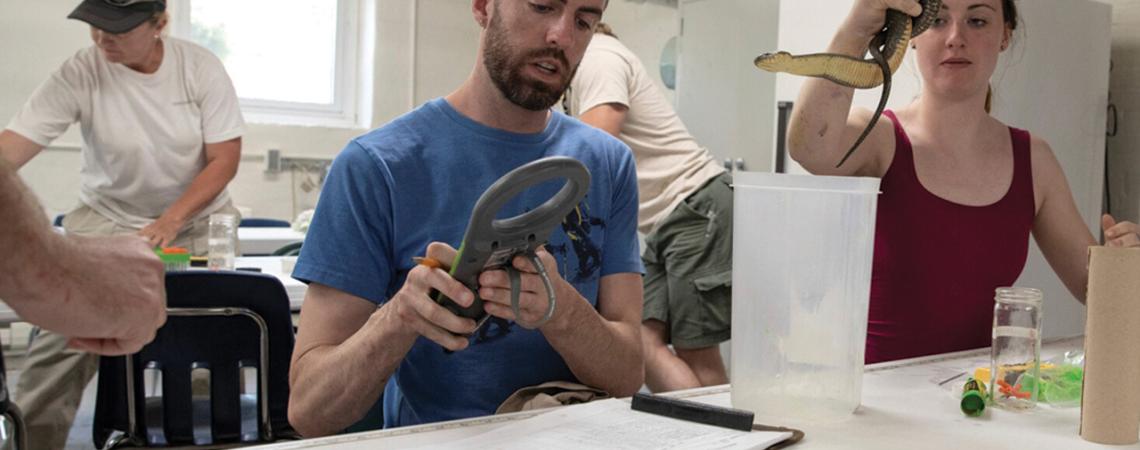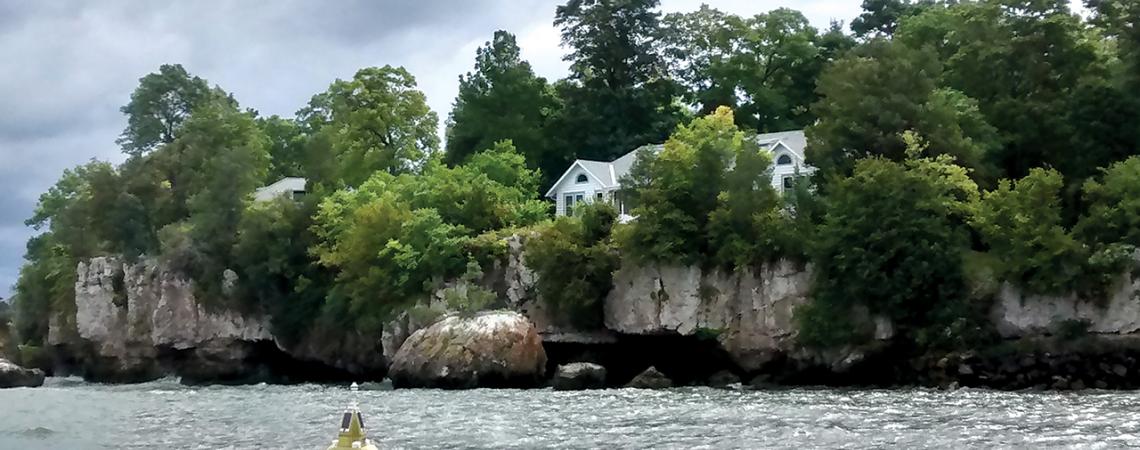Gibraltar Island is just 6.5 acres, yet sports a castle, a fleet of boats, and a small-but-mighty lab. Though tiny, it has a huge footprint in Lake Erie conservation — and in the hearts of thousands of yearly visitors.
In 1864, Gibraltar, nestled in the crook of South Bass Island, was purchased for $3,001 by Union Civil War financier and industrialist Jay Cooke. He constructed a massive summer home, now called Cooke Castle, and he and his extended family spent many summers there. After his eldest daughter inherited the island, she sold it in 1925 to Julius Stone, who was a trustee at Ohio State University. Stone subsequently offered it to OSU, and the university moved its Lake Erie laboratory to Gibraltar in 1929.
It’s the oldest freshwater biology field station in America — and loved by many.
Stone Lab’s idyllic setting makes spending a summer, or even a day there, an irresistible proposition.
“I first attended as a high school student with my ichthyology class on a field trip in the 1970s,” says John Hageman. “After college, a job opened up, and they were willing to hire me up at the lake.” Hageman eventually spent 25 years there as lab manager.
He says he felt at home there and so did plenty of others; his tenure was marked by a steady increase in the number of visitors. “When I started, we had about 1,300 kids that came through there annually. Right now, it’s about 4,000,” he says. “The beauty of the place is the setting. Where else can you take classes on an island surrounded by Lake Erie?”
During the summer, students, including middle and high schoolers, and teachers use Gibraltar and Stone Lab as a base as they explore the lake, its shores, marshes, and other sites. Hageman described students who study there as top-tier — looking toward futures in sciences or using the experience as a steppingstone to a professional career.
Chris Winslow, the director of Ohio Sea Grant and Stone Lab, describes the place as critical — especially in light of recent Lake Erie news. “Many of the questions that universities and agencies have couldn’t be answered without Stone Lab,” he says.
Tracking toxin-promoting algae in the lake and developing new algae-tracking satellites? They’re on it. Using “good” bacteria to filter drinking water and tracking microcystin in vegetables? Yep. Even figuring out which color of bait is best for walleye anglers in which water conditions — sure, Stone Lab scientists and students are working on that, too.
Each year, science and outdoor writers, legislators, charter captains, water plant operators, and other Lake Erie stakeholders visit and learn at Stone Lab.
Perhaps the best outreach ever was when Kristin Stanford, the researcher known as “the Island Snake Lady,” was featured on the TV show Dirty Jobs with Mike Rowe — not once, but twice. A year after that, Rowe described the experience as one of his five worst: “You catch the water snake, and you make it vomit. Then you look under a microscope at the puke to make sure it’s healthy. What she doesn’t tell you is that when you grab the water snake, it will bite you.”
Stanford and her team of researchers and students were able to save the Lake Erie water snake, which subsequently has been removed from the U.S. Fish and Wildlife Service’s threatened and endangered species list.
While the little gem known as Gibraltar Island is owned by OSU, it’s open to all. In fact, half the students and researchers there come from other universities.
“Right after my sophomore year, I took a six-week field zoology class,” says Mollie Knighton, a former Heidelberg University environmental science major. “It’s a lot to complete four credit hours in that time — every day it was go-go-go.” After graduating, she spent a year working for the Fish and Wildlife Service in West Virginia and credits her summer on Gibraltar for great preparation.
“It’s so completely hands-on — you’re almost never in a classroom. It forces you to engage with the environment and outdoors, plus classmates, instructors, and other researchers. I’m definitely not a person who prefers to be holed up in a lab by themselves for days on end.”
Knighton, who recently began working at the Lakeside Chautauqua program at Marblehead, will be conducting water sampling this season and has her eye on teaching science-related classes next year.
The Ohio Department of Natural Resources is flush with Stone Labbers. Although Travis Hartman never took classes there, he worked on the island as an undergrad in 1990 and has been singing its praises ever since. He’s now the ODNR’s Lake Erie program administrator.
“I thoroughly enjoyed it. Spent the whole summer there performing a multitude of tasks,” he says. “I thought I wanted to work on Lake Erie, and being out there for a summer cemented it for me. Now I go there and give fisheries management presentations. A lot of the stuff going on there is cutting-edge that’s applied throughout the Great Lakes and the world. It’s not just work for the classroom, it’s real research for the real world.”












